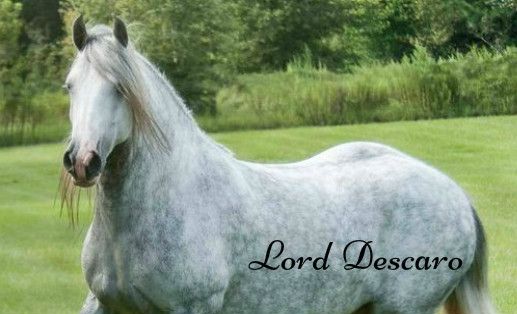Post by Lord Descaro on Oct 2, 2016 1:10:13 GMT -6
As horses generally do not converse through vocal sounds, most of their interaction is comprised of nonverbal signals. Horses communicate almost exclusively using their ears, feet, and body position.
Ears:
Forward - A horse with its ears pointing straight forward is interested in whatever it is looking at, whether it is food, another horse, a possibly danger, etc.
Relaxed - A horse with relaxed ears has them pointed to the sides at a slight angle, and will not be pointing them at anything specific. A horse's ears will be relaxed when resting.
Pointing - When a noise draws a horses attention, but isn't an immediate threat or particular interest, often only one of the ears will swivel to listen. Horses can listen to two different things at once with each ear. Their ears will swivel, flicker back and forth as they listen to different things behind, in front, and to the side.
Back - A horse with it's ears back is annoyed or angry. The ears point back to serve as a warning.
Pinned - A horse with its ears pinned or laid backwards against it skull is threatening something, whether another horse or a predator. This horse is likely to rear, kick, or bite, and is in an attack state of mind.
Feet:
In an encounter between two horses, whichever horse moves away first is the submissive one. Horses have a strict hierarchy in every herd or harem, where Horse A (the leader) can make both Horse B and Horse C move away, Horse B (the second) can make Horse C move away, while Horse C (the lowest) can make neither horse move away.
Any sort of movement away from another horse is communicating hey, I'm not the boss, you are.
Body Position:
Facing Directly - A horse directly facing another, especially if the ears are back, is saying, stay away from me. Facing another horse directly is often a threat.
Facing Away - A horse facing away from another is saying, I don't care what you do.
Standing Side-by-Side - Neutral position.
Muzzle:
When two horses meet, before they can do anything else, they will always touch muzzles and exchange breath. This is a customary greeting, and is the human equivalent of a handshake. Often one horse will end the connection by pinning their ears at the other and thus establishing dominance, but between two friendly horses that may not occur.
Ears:
Forward - A horse with its ears pointing straight forward is interested in whatever it is looking at, whether it is food, another horse, a possibly danger, etc.
Relaxed - A horse with relaxed ears has them pointed to the sides at a slight angle, and will not be pointing them at anything specific. A horse's ears will be relaxed when resting.
Pointing - When a noise draws a horses attention, but isn't an immediate threat or particular interest, often only one of the ears will swivel to listen. Horses can listen to two different things at once with each ear. Their ears will swivel, flicker back and forth as they listen to different things behind, in front, and to the side.
Back - A horse with it's ears back is annoyed or angry. The ears point back to serve as a warning.
Pinned - A horse with its ears pinned or laid backwards against it skull is threatening something, whether another horse or a predator. This horse is likely to rear, kick, or bite, and is in an attack state of mind.
Feet:
In an encounter between two horses, whichever horse moves away first is the submissive one. Horses have a strict hierarchy in every herd or harem, where Horse A (the leader) can make both Horse B and Horse C move away, Horse B (the second) can make Horse C move away, while Horse C (the lowest) can make neither horse move away.
Any sort of movement away from another horse is communicating hey, I'm not the boss, you are.
Body Position:
Facing Directly - A horse directly facing another, especially if the ears are back, is saying, stay away from me. Facing another horse directly is often a threat.
Facing Away - A horse facing away from another is saying, I don't care what you do.
Standing Side-by-Side - Neutral position.
Muzzle:
When two horses meet, before they can do anything else, they will always touch muzzles and exchange breath. This is a customary greeting, and is the human equivalent of a handshake. Often one horse will end the connection by pinning their ears at the other and thus establishing dominance, but between two friendly horses that may not occur.









